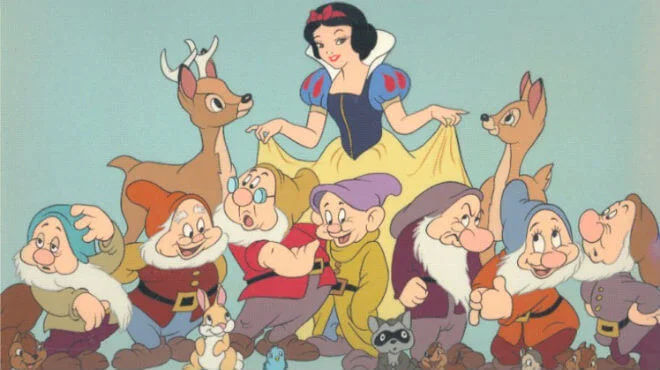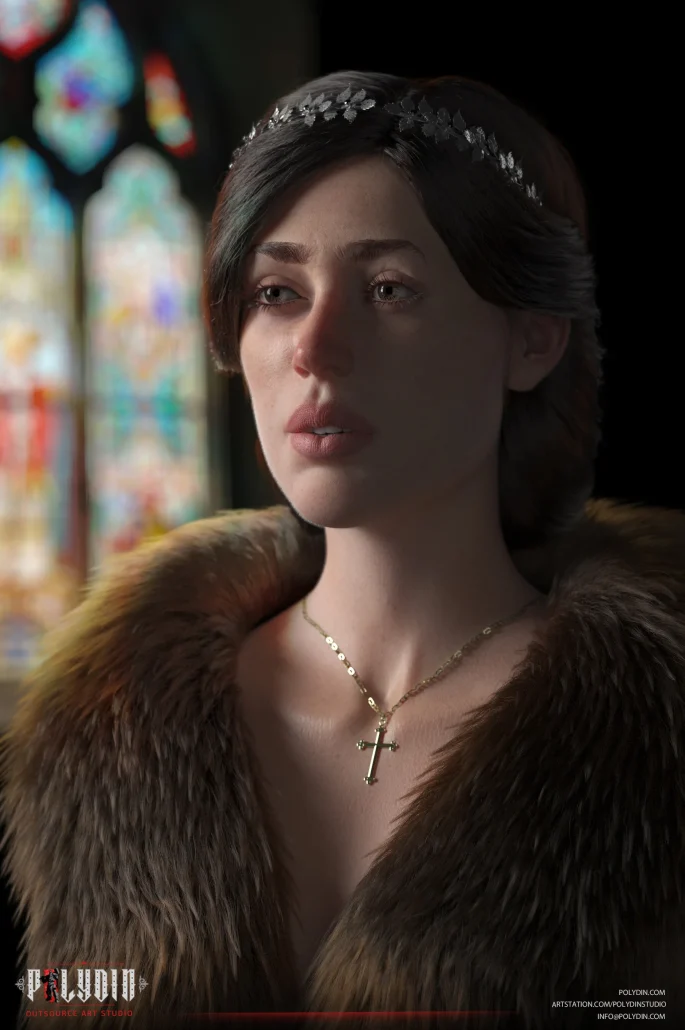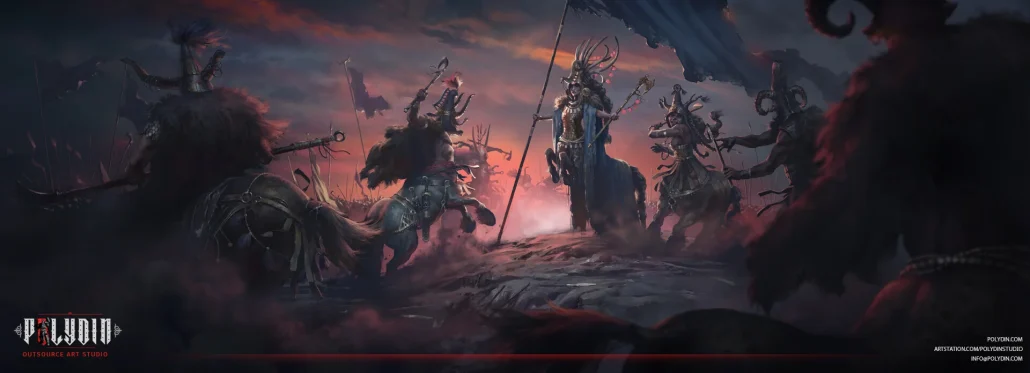Animation studios have the unique power to turn the impossible into reality, crafting worlds and characters that capture our imaginations. Behind every beloved animated film or show is a dedicated studio where talented artists, directors, and animators work tirelessly to bring these visions to life. From timeless classics to modern masterpieces, animation studios have played a crucial role in shaping the entertainment landscape. In this article of Polydin Game Art Outsourcing Studio, we’ll explore the different types of animation studios, spotlight some of the best in the world, and highlight what makes them stand out in this ever-growing industry.
What is an Animation Studio?
An animation studio is a creative powerhouse where artists, animators, and storytellers collaborate to bring animated characters, worlds, and stories to life. These animation studios specialize in producing animated content across various formats, including films, television series, commercials, video games, and digital media. The process involves a blend of artistry and technology, with teams of animators, illustrators, sound designers, and visual effects experts working together to craft everything from hand-drawn cartoons to sophisticated 3D animations. Animation studios are the backbone of the animation industry, providing the infrastructure, tools, and creative environment necessary to create the captivating stories that continue to enchant audiences worldwide.
Types of Animation Studios
Animation studios can be categorized like this:
- Traditional Animation Studios
These studios focus on hand-drawn, frame-by-frame animation, often referred to as 2D animation. Traditional animation requires significant artistic skill, with animators meticulously drawing and coloring every movement of a character. While this method was more prevalent in the past, many studios still embrace the charm and craftsmanship of traditional techniques, producing work reminiscent of classic Disney films or Japanese anime. - 3D Animation Studios
3D animation studios specialize in creating digital, three-dimensional characters and environments using computer software. This type of animation offers a lifelike and immersive experience, allowing for more dynamic camera movements, realistic lighting, and complex textures. Studios like Pixar and DreamWorks have mastered this craft, producing iconic films that utilize cutting-edge CGI (computer-generated imagery). - Stop-Motion Animation Studios
Stop-motion studios use physical objects or puppets, moving them incrementally between photographed frames to create the illusion of movement. This labor-intensive technique produces a distinct, tactile quality, giving the animation a quirky, handmade feel. Studios like Aardman Animations and Laika are renowned for their mastery of stop-motion, as seen in films like “Wallace & Gromit” and “Coraline.” - Hybrid Animation Studios
Some animation studios combine traditional 2D animation, 3D animation, and live-action footage to create innovative visual experiences. These studios leverage multiple techniques to push the boundaries of animation, offering unique storytelling opportunities that blend various styles seamlessly. Hybrid animation is often used in commercials, video games, and even feature films to create visually striking results. - Specialized Animation Studios
These studios focus on specific niches within the animation industry, such as visual effects (VFX), game animation, or animation for educational purposes. Specialized studios may collaborate with larger production companies or work independently to provide animation services tailored to particular industries.

What Are the Best Animation Studios in the World?
The world of animation is filled with studios that have shaped the industry with groundbreaking work, iconic characters, and unforgettable stories. Here are some of the most renowned animation studios that have set the gold standard for animation worldwide:
Disney Animation Studios
Disney Animation Studios is the cornerstone of the animation industry, responsible for some of the most cherished films and characters of all time. Established in 1923 by Walt and Roy Disney, this studio revolutionized the art of animation with timeless classics like Snow White and the Seven Dwarfs and Cinderella. Disney’s mastery of storytelling and innovation continued through the decades with The Lion King, Aladdin, and more recently, Frozen and Moana.
Known for its vibrant 2D animation during its early years, Disney adapted to the times, embracing 3D animation and producing new masterpieces that resonate with audiences of all ages. The studio’s unique blend of heartwarming stories, stunning animation, and memorable music has solidified its status as the most beloved animation studio in the world. From fairy tales to cultural explorations, Disney’s ability to capture universal themes has made it an enduring force in global entertainment.
Pixar Animation Studios
Pixar Animation Studios has transformed the animation landscape with its revolutionary use of computer-generated imagery (CGI) and emotionally resonant storytelling. Founded in 1986 by Steve Jobs, Edwin Catmull, and Alvy Ray Smith, Pixar made its mark with Toy Story—the world’s first fully computer-animated feature film—and has since built an extraordinary legacy of critically acclaimed films, including Finding Nemo, The Incredibles, and Up.
What sets Pixar apart is its dedication to creating films that appeal not just to children but to audiences of all ages, often blending humor, adventure, and deep emotional themes. Pixar’s distinctive storytelling style revolves around heartwarming characters and meaningful narratives, delivered with stunning visual artistry. Its technological innovations, such as advanced rendering software, have continuously pushed the boundaries of animation, making it a studio synonymous with both quality and creativity.
DreamWorks Animation Studios
DreamWorks Animation Studios has established itself as a powerhouse in the world of animation, delivering a diverse range of films known for their wit, charm, and visual splendor. Founded in 1994 by Steven Spielberg, Jeffrey Katzenberg, and David Geffen, DreamWorks quickly rose to prominence with the success of films like Shrek, Madagascar, and Kung Fu Panda. The studio’s ability to create stories that appeal to both children and adults, often infusing humor and heart, has garnered it a dedicated global fanbase.
One of DreamWorks’ hallmarks is its emphasis on original and unconventional storytelling. From irreverent fairy tale parodies to tales of Viking warriors and their dragons, the studio consistently explores fresh concepts and distinct worlds. DreamWorks has also been a leader in the technical evolution of animation, consistently pushing the boundaries of 3D animation and special effects to create visually stunning works.
Sony Pictures Animation
Sony Pictures Animation is relatively young compared to its competitors, but it has quickly made a name for itself with bold, visually dynamic films that stand out in the animation landscape. Established in 2002, Sony achieved its first major success with Cloudy with a Chance of Meatballs, which showcased its unique, highly stylized animation and quirky humor. Sony continues to push the envelope, particularly with its critically acclaimed film Spider-Man: Into the Spider-Verse, which won an Academy Award for Best Animated Feature and set a new benchmark for animation innovation.
Sony Pictures Animation is known for its willingness to experiment with style and form, blending different animation techniques such as 2D, 3D, and comic book aesthetics. Films like the Hotel Transylvania series and The Mitchells vs. The Machines further showcase the studio’s ability to balance humor, action, and heart with visually inventive storytelling, earning it a respected place among top animation studios.
Nickelodeon Animation Studio
Nickelodeon Animation Studio has been a driving force in children’s entertainment for decades, producing some of the most beloved and enduring animated television series. Launched in 1990, Nickelodeon quickly became a household name with hit shows like Rugrats, Doug, and The Ren & Stimpy Show. However, its most iconic creation is undoubtedly SpongeBob SquarePants, which remains a global phenomenon over two decades after its debut.
Nickelodeon’s strength lies in its ability to create content that resonates with kids while also appealing to older audiences through clever humor, nostalgia, and relatable characters. The studio’s successful ventures into feature-length films—such as The SpongeBob Movie and Rango—further highlight its storytelling capabilities and artistic range. Nickelodeon continues to be a leader in animated content, providing a platform for innovative creators and producing shows that have become cultural touchstones for multiple generations.
Warner Bros. Animation
Warner Bros. Animation has been a pivotal player in shaping the history of animation, particularly with its iconic Looney Tunes and Merrie Melodies series. Established in 1933, the studio became synonymous with beloved characters like Bugs Bunny, Daffy Duck, and Porky Pig. These creations, known for their sharp wit, slapstick humor, and timeless charm, have left an indelible mark on pop culture and continue to entertain audiences of all ages.
Beyond its classic animated shorts, Warner Bros. Animation expanded its influence into television with acclaimed series like Batman: The Animated Series, Animaniacs, and Justice League, all of which helped elevate the quality and depth of storytelling in animation for both children and adults. Known for its sophisticated narratives, dynamic character development, and strong ties to the comic book world, Warner Bros. Animation remains a heavyweight in the industry, combining nostalgia with modern innovation.
Cartoon Network Animation Studios
Cartoon Network Animation Studios is widely regarded as a creative powerhouse that has revolutionized television animation over the last few decades. Established in 1994, this studio has been responsible for producing some of the most imaginative and boundary-pushing animated series of all time, including Dexter’s Laboratory, The Powerpuff Girls, Adventure Time, and Steven Universe. These shows helped define the network’s distinctive brand of quirky, often surreal humor paired with heartfelt storytelling.
What sets Cartoon Network Animation apart is its dedication to fostering creator-driven content that often challenges conventional expectations of what kids’ programming can be. The studio’s bold approach to animation has led to some of the most critically acclaimed and culturally significant series of the modern era, influencing not only younger audiences but also the entire animation industry. Its commitment to creative freedom has allowed it to become a launching pad for a new generation of animators and storytellers.
Studio Ghibli
Studio Ghibli is revered as one of the greatest animation studios in the world, known for its breathtakingly beautiful films and profound, emotionally resonant stories. Founded in 1985 by legendary filmmakers Hayao Miyazaki and Isao Takahata, this Japanese studio has produced some of the most beloved animated films of all time, including Spirited Away, My Neighbor Totoro, and Princess Mononoke. Studio Ghibli’s films are renowned for their intricate hand-drawn animation, rich world-building, and ability to tackle universal themes like environmentalism, love, and the human spirit.
Studio Ghibli’s attention to detail and commitment to artistic excellence have earned it a global following and numerous accolades, including an Academy Award for Spirited Away. The studio’s films often blur the lines between fantasy and reality, captivating audiences with their magical realism and deeply philosophical undertones. With a unique style that blends cultural specificity with universal appeal, Studio Ghibli has had a lasting influence on both Eastern and Western animation, making it one of the most respected and admired animation studios in the world.
Blue Sky Studios
Blue Sky Studios was a renowned animation studio known for its visually stunning and technically sophisticated films. Founded in 1987 by a group of animators and visual effects artists, Blue Sky Studios initially focused on producing visual effects for commercials and films. It wasn’t until 2002, with the release of Ice Age, that the studio made its mark as a significant player in the animation industry. Ice Age became a massive box office hit, leading to a successful franchise that solidified Blue Sky’s place in mainstream animation.
Blue Sky’s strength lay in its unique and engaging character designs and vibrant storytelling, as seen in films like Rio and The Peanuts Movie. The studio developed a distinctive style marked by its ability to blend heartwarming humor with adventurous plots. Unfortunately, after being acquired by Disney in 2019 through the 21st Century Fox merger, Blue Sky Studios was shut down in 2021. However, its legacy lives on through its iconic films that continue to resonate with audiences worldwide.
Illumination
Illumination Entertainment is one of the most commercially successful animation studios in recent years, known for creating visually striking films with broad appeal. Founded in 2007 by Chris Meledandri, the studio quickly gained recognition with the release of Despicable Me in 2010. The film introduced the world to the mischievous yet lovable Minions, who quickly became a cultural phenomenon. Illumination’s strength lies in its ability to craft humorous and family-friendly films that resonate with global audiences.
With hit franchises like Despicable Me, Minions, The Secret Life of Pets, and Sing, Illumination has established itself as a leading player in the animation industry. The studio is known for its ability to produce highly entertaining films on relatively modest budgets, resulting in impressive box office returns. Illumination’s vibrant and often slapstick style appeals to audiences of all ages, making it a household name in animated entertainment.
Paramount Animation
Paramount Animation is the animation division of Paramount Pictures, established in 2011 as the studio’s dedicated arm for animated feature films. While Paramount has a long history with animation dating back to classic animated shorts like Popeye and Betty Boop, the formal creation of Paramount Animation marked a new era for the studio. Its first major release was The SpongeBob Movie: Sponge Out of Water in 2015, which capitalized on the beloved SpongeBob SquarePants franchise and performed well both critically and commercially.
Paramount Animation has steadily built a diverse portfolio that includes Sherlock Gnomes, Wonder Park, and Rumble. While not as prolific as some of its competitors, Paramount Animation is growing into a significant player by focusing on unique, character-driven stories and leveraging the appeal of well-known properties. The studio continues to evolve, looking to carve out a distinct identity in the competitive landscape of animation.
Polydin Studios
Polydin Studio is a dynamic and creative force in the animation and game development industry, known for its expertise in 3D character design and immersive storytelling. Established by a team of passionate artists, Polydin has quickly garnered attention for its distinctive approach to character creation, specializing in bringing everything from cartoonish figures to photorealistic designs to life. With a solid foundation in both animation and gaming, Polydin seamlessly blends artistic vision with technical innovation, making them a sought-after partner for studios and developers worldwide.

Polydin’s portfolio spans a diverse range of projects, showcasing their versatility in creating lifelike 3D characters and environments. They pride themselves on their meticulous attention to detail, whether it’s crafting elaborate textures, fine-tuning hair and fur dynamics, or designing intricate outfits and props. The studio utilizes industry-standard software such as ZBrush, Maya, and Substance Painter to deliver high-quality results that consistently exceed client expectations.
Beyond technical prowess, Polydin excels in narrative development, blending visual elements with deep storytelling techniques. Their work captures the imagination by focusing on strong character development, dynamic shot composition, and meaningful emotional arcs that resonate with audiences. Their ability to handle everything from concept art to post-production support highlights their comprehensive service offering, ensuring seamless collaboration with clients throughout the project lifecycle.
Polydin’s commitment to pushing creative boundaries, coupled with their technical mastery, makes them a standout player in the global animation and gaming scene.
Top 5 Biggest Animation Studios in the Europe in 2025
Europe’s animation sector is booming, with studios blending cinematic techniques, motion graphics, and storytelling to serve global brands and media. Here are the standouts for 2025:
1. Yans Media (Lithuania)
A powerhouse in motion‑graphics and visual narrative, Yans Media delivers polished explainer and marketing content for big clients like Visa, Unilever, and leading crypto projects. Their 52‑strong team specializes in transforming complex ideas into clear and compelling stories.
2. Petrick (Estonia)
Founded in 2016, Petrick is an award-winning animation studio that specializes in both 2D and 3D animation across genres, from commercials and music videos to short games. What sets Petrick apart is its hybrid approach: a tight-knit core team handles direction and project management, while a broad network of artists collaborates on execution. Whether it’s puppet-style animation or cutting-edge digital effects, Petrick blends artistry with purpose. Their work is both visually inventive and strategically targeted, helping brands tell stories that stick. It’s a true creative hub where passion meets precision.
3. Illo (Italy)
Illo is a globally recognized design studio rooted in Italy, best known for its colorful motion design, bold illustration, and crisp storytelling. With a client list that includes Google, Apple, CNN, McDonald’s, and Emirates, Illo’s work combines charm and clarity in equal measure. Their international team takes a design-first approach, balancing visual playfulness with communication goals. Whether it’s branding, editorial content, or product launches, Illo delivers aesthetic storytelling that cuts through the noise. And yes, they do love pizza.
4. BluBlu Studios (Poland/Hungary region)
An award‑winning 2D animation agency, BluBlu has expanded across Warsaw and Eastern Europe. Their high-end motion‑design and character animations have been used by brands like The New York Times, Durex, Pfizer, and Moderna. Known for cinematic quality and global reach, BluBlu is arguably one of Eastern Europe’s biggest.
5. Pigeon Studio (Lithuania/Slovakia/Poland)
With over a decade of experience and a team of ~41 animators, Pigeon excels in high‑quality explainer and character animation. Their portfolio spans clients like Honda, Vinted, and NGOs, with strong reviews highlighting creative storytelling and smooth workflows.
Factors Considered in Ranking Animation Studios
When ranking animation studios, several critical aspects contribute to their standing within the industry. These factors go beyond just the success of a single film or series and look at the broader picture of their overall impact, creativity, and leadership in the field.
Quality and Consistency of Output
A studio’s reputation is largely built on the quality of its work. Top studios consistently produce animations that are not only visually impressive but also tell compelling stories. This includes maintaining high standards across a range of projects over time, whether it be feature films, short films, TV series, or other media. Studios that continue to deliver critically acclaimed and audience-loved content solidify their place as industry leaders.
Technological Innovation and Adoption
The animation industry thrives on innovation, with technology playing a key role in shaping its future. Leading studios are often at the forefront of adopting and developing new techniques, such as advanced CGI, motion capture, and even artificial intelligence-driven animation tools. Studios that pioneer or embrace these technologies push the boundaries of what is possible in animation and set new standards for the entire industry.
Industry Recognition and Awards
Prestigious awards like the Academy Awards, BAFTAs, Emmys, and Annies are important benchmarks of a studio’s achievements. A studio with a strong track record of winning such awards is recognized not only for its technical prowess but also for its artistic innovation. Awards bring visibility and respect, reflecting a studio’s ability to create works of excellence that resonate with both audiences and critics alike.
Global Impact and Audience Reach
The best animation studios have a global presence, appealing to diverse audiences across continents and cultures. Studios that create universally relatable content—whether it be through themes, characters, or storytelling techniques—often enjoy widespread popularity. These studios are capable of producing works that transcend language barriers and cultural differences, helping shape global pop culture and fostering international fan bases.
Diversity of Portfolio Across Various Animation Styles and Platforms
Versatility is a hallmark of top studios. The ability to excel across multiple animation styles, such as 2D, 3D, stop-motion, and even emerging mediums like virtual reality, is crucial. Additionally, studios that successfully produce content for various platforms—films, television, video games, online content, and even theme parks—demonstrate their creative breadth and adaptability. This variety allows them to tap into different markets and audiences, enhancing their global influence.
Collaborative Capabilities and Industry Partnerships
No animation studio operates in a vacuum. Collaboration is key to success, whether it involves partnerships with other studios, co-productions with major film companies, or working with technology firms to push the boundaries of what can be achieved on-screen. Studios that effectively collaborate with others often create groundbreaking content that blends different creative visions, leading to fresh and exciting innovations.
Financial Performance and Market Presence
The financial health of a studio is an essential indicator of its influence and staying power. Strong financial performance allows studios to take on larger, more ambitious projects, expand their teams, and invest in state-of-the-art technology. In turn, a dominant market presence ensures that their productions reach wide audiences and create lasting cultural impacts, reinforcing their leadership in the industry.
Talent Development and Retention
Behind every successful animation studio is a team of talented artists, animators, writers, directors, and producers. The top studios are known for attracting, nurturing, and retaining this talent. A strong commitment to professional growth, providing creative freedom, and maintaining a positive work culture allows studios to continuously innovate and stay ahead of the curve. Retaining top talent ensures that the studio remains capable of producing groundbreaking work for years to come.
Contribution to Advancing the Animation Industry
Finally, the best studios not only produce great content but also contribute to the evolution of the animation industry as a whole. This may involve developing new animation techniques, advancing animation as an art form, or pushing for greater representation and diversity within the field. Studios that take on a leadership role in shaping the future of animation demonstrate a commitment not only to their own success but to the growth and sustainability of the entire industry.

Read Also: https://polydin.com/top-animation-outsourcing-companies/Top Animation Outsourcing Companies in 2024
Conclusion
In conclusion, the ranking of animation studios reflects more than just their ability to produce successful films; it highlights their innovation, global influence, and leadership within the industry.
The top studios set themselves apart by consistently delivering high-quality content, pioneering technological advancements, and nurturing creative talent. These studios not only shape the present and future of animation but also push the boundaries of storytelling and artistic expression on a global scale. Their impact extends far beyond the screen, contributing to the evolution and advancement of the animation industry as a whole.



